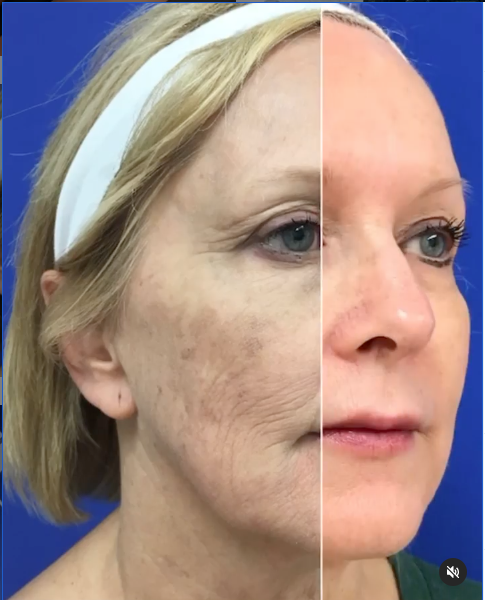Less sun exposure means more time to bring your skin back to optimum health, which makes the winter months the best time to undergo skin-resurfacing treatments. While you can smooth, tighten and brighten at home, there’s no comparison when it comes to in-office devices that specifically address sun damage and signs of aging in a targeted way. Here, our experts outline the best ways to get underneath the surface and reveal beautiful, healthier-looking skin.

Dr. Hopkins used the Fotona laser to give this patient smoother, tighter, clearer and healthier skin.
Ablative Laser Treatments
More invasive than their counterparts, ablative lasers remove the top layer of skin. “I often perform fully ablative laser resurfacing during January and February when patients can stay indoors and easily avoid sun exposure and outdoor activities while they’re healing,” says Monroe, LA dermatologist Janine Hopkins, MD. “I use the Fotona SP Dynamis which lets me control the depth of the skin-resurfacing procedure to optimize my patient’s outcome.” Dr. Hopkins says ablative laser treatments can repair chronic sun damage, remove skin growths and tighten the skin while improving the skin tone and texture.”
What to Expect: It can take a few weeks for skin to completely heal. After about two weeks, new skin grows and covers the wounds. Dr. Hopkins says you can expect to see results in about two weeks and will continue to see improvement for up to 12 weeks. “Results last as long as patients take excellent care of their skin with medical-grade skin-care products and sunscreen. Many of my patients like to make this a yearly maintenance procedure.”
Nonablative Laser Treatments
While ablative lasers focus on the top layer, nonablative lasers work by heating up the underlying tissue, without harming the surface, which stimulates collagen production. “Fraxel Dual is a fall and winter favorite in my office,” notes Nanuet, NY dermatologist Heidi Waldorf, MD. “I utilize its two nonablative fractionated wavelengths to improve texture and color.”
What to Expect: “Fraxel does requires slight downtime,” says Dr. Waldorf. “Plan for about two to three days of swelling and up to five days of redness and peeling. While one session can brighten and tighten, I recommend three to four to treat significant signs of aging.”
Microneedling with Radio Frequency
Studio City, CA dermatologist Gene Rubinstein, MD says his most popular procedure for skin resurfacing this winter is Morpheus8, which utilizes microneedling with radio frequency. “Morpheus8 offers skin rejuvenation, tightening and lifting with minimal downtime,” he explains. “The procedure takes about an hour and is typically done in a series of three treatments, spaced one month apart. I sometimes combine it with AccuTite, which uses a small cannula under the skin to deliver radio frequency deep into the tissues to promote dilution of small pockets of fat. This helps diminish small pockets of fat in the jowls and under the chin.”
What to Expect: Some results are seen within weeks, while collagen remodeling, leading to tightening, is best seen about three months after a series of three sessions.
Find a Doctor
Find a NewBeauty “Top Beauty Doctor” Near you
